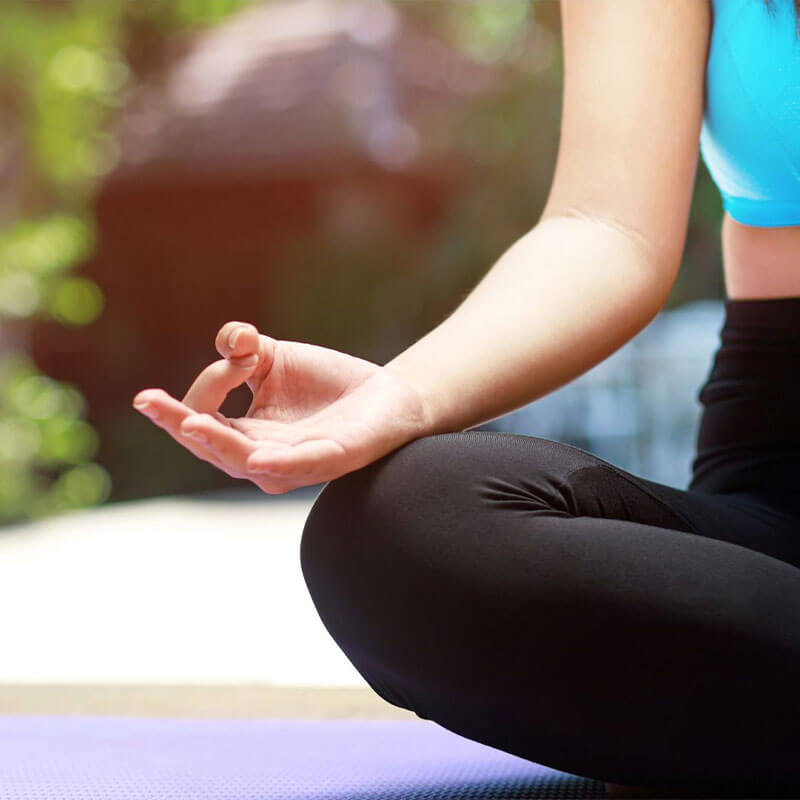FAQ
Osteopathy aims to promote the body’s natural ability to heal itself by restoring balance and alignment to the body.
How do I prepare for an osteopath appointment?
Preparing for an osteopath appointment is important to get the most out of your visit. Firstly, you should make a note of any symptoms or pain you’re experiencing, and when they started. This will help your osteopath understand your condition better. You should also bring any relevant medical reports, scan results, or X-rays with you to the appointment. Wear comfortable clothing that allows movement, and avoid tight or restrictive clothes. Lastly, avoid eating a large meal right before your appointment. This may cause discomfort during the treatment.
What is Osteopathy?
So many people ask what osteopathy is, think about your car. Your body is like a car, it has a structure and then functions so it can move. Osteopaths are a little bit like mechanics for cars, except they are mechanics for your body. They work on the belief that your ‘structure governs function’ in other words, if your body works well it will move well. Osteopaths spend five years learning all aspects of the body from Osteology, Arthrology, Differential diagnosis, Clinical skills, Osteopathic Techniques, all of which allow an osteopath to pick the best techniques to suit your individual body type. Therefore a lower back pain would be treated differently according to your age, your medical history and personal preferences. Treatment is aimed to restore balance to the body, allowing you to function without pain. Some osteopaths also use other modalities to help accelerate healing in their patients, such as Dry needling, Ultrasound therapy, Electrotherapy, Kinesio-taping, Shockwave treatments and Cranial Osteopathy.
What should I ask my osteopath?
Asking your osteopath the right questions can help you understand your condition better and what you can do to improve it. Here are some questions you may want to consider asking:
- What is the cause of my pain or discomfort?
- What treatment options do I have?
- How long will it take for me to feel better?
- Are there any lifestyle changes I can make to help with my condition?
- Are there any exercises or stretches I can do at home to help with my treatment?
- How often should I come in for treatment?
- Is there anything I should avoid doing while I’m undergoing treatment?
- Are there any potential side effects of the treatment?
- How can I prevent this condition from recurring in the future?
- Is there anything else I should know about my condition or treatment plan?
Remember, your osteopath is there to help you, so don’t hesitate to ask any questions you may have.
What happens at the first osteopath appointment?
At your first appointment, your osteopath will start by taking a detailed medical history and asking you about your symptoms and how they started. They may also ask you about your lifestyle, occupation, and any previous injuries or medical conditions you may have had.
After the initial consultation, your osteopath will conduct a physical examination to assess your range of motion, posture, and any areas of discomfort or pain. They may also conduct orthopaedic tests and palpation to assess the condition of your muscles, joints, and ligaments.
Based on the information gathered, your osteopath will then develop a treatment plan tailored to your specific needs. This may include soft tissue massage, joint mobilisation, stretching, or other manual techniques to help alleviate pain and improve mobility.
Your osteopath may also give you advice on lifestyle changes, exercise, and self-care techniques to help manage your condition and prevent it from recurring in the future.
Overall, your first osteopath appointment is an opportunity to discuss your symptoms, receive a thorough physical examination, and develop a personalised treatment plan to help you feel better.
How long does it take for osteopathy to work?
In general, acute conditions such as a sprain or strain may only require a few sessions to resolve, while chronic conditions such as back pain or arthritis may require ongoing treatment to manage symptoms.
It’s important to remember that osteopathy is a holistic approach to healthcare, and treatment focuses on improving the body’s overall function rather than just treating symptoms. Osteopathy aims to address the root cause of a condition and restore balance to the body, which can take time.
Your osteopath will work with you to develop a treatment plan that is tailored to your specific needs and goals and will advise you on how often you should come in for treatment. It’s also important to follow any self-care advice and exercises provided by your osteopath to help support your treatment and improve your overall health and wellbeing.
Will I have to undress during my osteopathy treatment?
The need to undress depends on the area of the body being treated. Osteopathy is a hands-on therapy that involves the manipulation of muscles, joints, and other tissues, so it’s important for an osteopath to have access to the affected area.
For some treatments, it may be necessary to partially undress so that your osteopath can access the area being treated. However, you will always be provided with a gown or towel to maintain your privacy and modesty during the treatment.
It’s important to note that osteopaths are trained to work with patients to ensure they feel comfortable and at ease during treatments. If you have any concerns about undressing or any other aspect of the treatment, you should feel free to discuss them with your osteopath before the session begins. They will work with you to ensure you are comfortable and that your privacy and dignity are respected at all times.
What is the difference between osteopathy and physiotherapy?
Both osteopaths and physiotherapists are trained professionals who can help treat a range of conditions. The choice between the two depends on personal preference and the specific needs of the patient.
Osteopaths focus on manual therapy to address acute and chronic conditions by targeting bones, muscles, and various body systems. They take a holistic approach to realign the body and treat its root problems.
Physiotherapists focus on exercise-based management to address conditions such as postural issues, sports injuries, and arthritis. They use a targeted approach to boost the strength and mobility of problem areas. Both professions have their own strengths and limitations.
Therefore, it is difficult to say which one is “better” as it depends on the individual case. It is important to research the therapist and clinic before booking an appointment and discuss your concerns and preferences with the therapist.
Do osteopaths use massage?
Osteopaths may use massage as part of their treatment approach, but it’s important to note that osteopathy is not the same as massage therapy.
While massage therapy focuses primarily on manipulating soft tissues to promote relaxation and relieve tension, osteopathy takes a more holistic approach to healthcare, looking at the body as a whole and addressing imbalances in the musculoskeletal system that may be causing symptoms.
Osteopaths use a range of techniques, including massage, joint mobilisation, and stretching, to improve the function of the body’s tissues and promote healing. The specific techniques used will depend on a patient’s condition and unique needs.
So while massage may be one component of osteopathic treatment, it’s just one of many techniques that may be used to address the underlying causes of a condition.
What’s the difference between a pregnancy massage and regular massage?
Pregnancy massage is specifically designed for pregnant women and can help to relieve some of the discomforts and pains associated with pregnancy, such as back pain and swelling.
Pregnancy massage takes special care to position a woman’s body using bolsters or props to accommodate the physical changes that occur during pregnancy, such as the growing belly.
The woman will usually lie on her side or sit upright or in a semi-reclining position. Lying on the back or stomach is not recommended after 20 weeks of pregnancy, as it can restrict blood flow to the uterus and cause discomfort. Regular massage on the other hand may involve lying flat on the table, either face up or face down, depending on the preference and presentation of the client.
Pregnancy massage uses gentle Swedish massage techniques that provide muscle relaxation to the entire body. The pressure is adjusted to suit the needs and preferences of the woman at different stages of her pregnancy. This is quite difference to a regular massage which may use different types of massage techniques (such as deep tissue or sports massage) to apply more pressure and intensity to certain areas of the body.
How does an osteopath help back pain?
Osteopaths approach back pain treatment by looking at the whole body to identify the root cause of pain. They use a range of techniques to address the underlying problem and provide relief from pain. Here are some of the ways our osteopaths can help with back pain:
- Spinal manipulation: Osteopaths use spinal manipulation to realign the vertebrae, reduce tension, and improve the range of motion.
- Soft tissue massage: Osteopaths use massage techniques to reduce muscle tension, promote relaxation, and increase blood flow to the affected area.
- Exercise prescription: Osteopaths provide tailored exercises to strengthen muscles, improve flexibility, and alleviate pain.
- Lifestyle advice: Osteopaths offer advice on how to adjust daily activities to prevent further strain on the back.
- Posture correction: Osteopaths assess and correct posture issues that may be contributing to back pain.
By using these techniques, osteopaths can create a tailored patient plan that’s designed to alleviate back pain and improve overall function and mobility.
Can an osteopath help with sciatica?
Yes, an osteopath can help with sciatica. Sciatica is a condition that occurs when the sciatic nerve that runs from the lower back down to the legs is irritated or compressed. This can cause pain, tingling, numbness, or weakness in the affected leg.
Osteopaths can help with sciatica by addressing the underlying cause of the condition. They use a range of techniques to alleviate pain and improve function. Here are some ways osteopaths can help with sciatica:
- Soft tissue massage: Osteopaths use massage techniques to reduce muscle tension and inflammation around the affected area.
- Spinal manipulation: Osteopaths use spinal manipulation to realign the vertebrae and reduce pressure on the sciatic nerve.
- Exercise prescription: Osteopaths provide tailored exercises to strengthen muscles and improve flexibility in the lower back and legs.
- Posture correction: Osteopaths assess and correct posture issues that may be contributing to sciatica.
- Lifestyle advice: Osteopaths offer advice on how to adjust daily activities to prevent further strain on the lower back.
By using these techniques, osteopaths can help alleviate pain and improve function for people with sciatica.
Can osteopaths treat anxiety?
Additionally, osteopaths may provide advice on lifestyle changes and exercises that can help manage anxiety. By promoting relaxation, reducing muscle tension and improving overall physical health, osteopathy can help improve a patient’s overall wellbeing and reduce the impact of anxiety on their daily life.
However, it is important to note that anxiety is a complex condition that requires a multidisciplinary approach to treatment. Osteopathy should not be used as a substitute for conventional medical treatment, such as therapy or medication, but rather as a complementary therapy to support a patient’s overall wellbeing. If you are experiencing symptoms of anxiety, it is important to speak to a healthcare professional for an accurate diagnosis and a comprehensive treatment plan.
Should I see an osteopath regularly?
However, if you do not have any specific health concerns, it may not be necessary to see an osteopath regularly. Osteopathy can be used as a complementary therapy to support your overall health, but it is not a replacement for conventional medical treatment or self-care practices.
An osteopath can work with you to develop an individualised treatment plan based on your unique needs and goals.
Why does osteopathy make you tired?
Patients can sometimes feel tired or sleepy after an osteopathy treatment session. This is because osteopathic techniques, such as soft tissue massage and spinal manipulation, can stimulate the parasympathetic nervous system, which is responsible for rest and digestion.
When the parasympathetic nervous system is activated, it can cause a decrease in heart rate, blood pressure, and respiratory rate, which can make you feel relaxed and calm. This can also lead to feelings of fatigue or drowsiness, especially if you are already feeling tired or stressed before the treatment.
Additionally, osteopathic techniques can release muscle tension and improve circulation, which can promote deep relaxation and improve sleep quality. This can also contribute to feelings of tiredness or sleepiness after a treatment session.
It is important to note that these effects are usually temporary and should not interfere with daily activities. If you experience prolonged fatigue or other unusual symptoms after an osteopathic treatment, it is important to speak with our team to rule out any underlying health conditions.
How long will it take to feel better after being treated by an osteopath?
The amount of time it takes to feel better after an osteopathic treatment can vary depending on the individual and the specific condition being treated. Some people may feel immediate relief after a treatment session, while others may take several days to notice an improvement in their symptoms.
In general, you may feel some immediate changes in your body, such as increased relaxation or improved range of motion. However, it may take some time for deeper changes to occur, such as the healing of injured tissues or the correction of structural imbalances.
Your osteopath may recommend a series of treatment sessions to achieve the best results, especially if you have a chronic or complex condition. It is important to follow their recommendations and attend all scheduled appointments to ensure you get the most benefit from the treatment.
After an osteopathic treatment, it is also important to give your body time to rest and recover. Avoid strenuous activities and allow yourself time to relax and integrate the changes that occurred during the treatment.
If you have any concerns about your recovery or the effectiveness of the treatment, it is important to speak with your osteopath. They can work with you to adjust your treatment plan to ensure you are getting the best possible care.
Is osteopathy good for mental health?
Osteopathic techniques such as soft tissue massage, craniosacral therapy, and spinal manipulation can help to release tension and stress from the body, which can have a positive effect on mental wellbeing. By relaxing the body, osteopathy can also help to calm the mind and reduce anxiety and stress.
In addition, osteopathy can improve circulation and promote the release of endorphins, which are the body’s natural painkillers and mood boosters. This can help to alleviate symptoms of depression and improve overall mood and outlook.
Osteopathy may also be helpful for individuals with conditions that affect both physical and mental health, such as chronic pain, fibromyalgia, and irritable bowel syndrome. By addressing both the physical and emotional aspects of these conditions, osteopathy can promote overall health and wellbeing.
It is important to note that osteopathy should not be used as a substitute for mental health treatment, and individuals experiencing mental health issues should seek appropriate care from a qualified healthcare professional. However, as a complementary therapy, osteopathy can be a valuable tool in promoting overall health and wellness, including mental health.
Therapies
Looking after your Physical and Mental wellbeing
Our range of therapies complements each other to ensure we create ultimate wellbeing.
Nutritional advice will help those with stomach and visceral problems. Osteopathy and exercise rehabilitation works with alignment, injuries and posture. Reiki, Tai Chi and Counselling ensure that our minds are dealing with everyday stress efficiently.
How we can help you
If you would like a spinal assessment or have an injury please get in touch with us or



